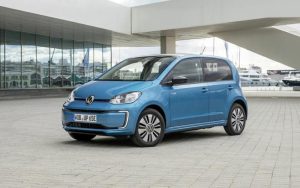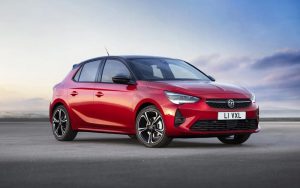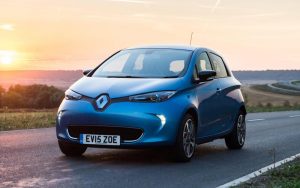Introduction
The Peugeot 208, subsequently known as the Stellantis, is a supermini automobile manufactured by the PSA Group. In March 2012, it was debuted at the Geneva Motor Show.
In April 2012, the 208 superseded the 207, and the car is now in its second generation.
All petrol engines meet Euro 5 standards, while diesel engines emit CO2 emissions of 99 g/km or less.
The 208 was introduced in September 2012 with two new three-cylinder engines with variable valve timing – the 1.0 VTi and 1.2 VTi – in addition to the four-cylinder petrol engines carried over from the previous model.

Furthermore…
The PSA Group’s Peugeot 208 (later Stellantis) is a supermini automobile. In March 2012, it was first shown at the Geneva Motor Show. In April 2012, the 207 was replaced by the 208, now in its second generation.
The diesel engines have CO2 emissions of 99 g/km or less, while all petrol engines meet the Euro 5 standard.
The 208 was introduced in September 2012 with two new three-cylinder engines with variable valve timing, the 1.0 VTi, and 1.2 VTi, in addition to the four-cylinder petrol engines carried over from the previous model.
That’s just an introduction; keep reading to learn more about Peugeot E-208.
Happy Reading…
Specifications
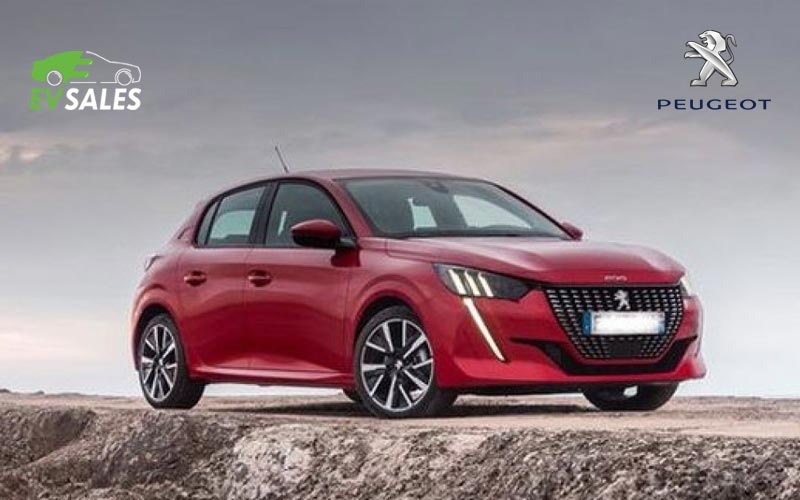
Features: There’s a lot of wow factor here for a small car.
The mid-to-high-end trim materials, contrast stitching, multi-color ambient lighting, Peugeot’s eye-catching 3D display for the driver’s binnacle, adaptive cruise control, small steering wheel, sport mode, decent range, and full led Headlights, touchscreen with connected navigation are all included.
Traffic Lights
With its compact design, quick take-off from traffic lights, and zero-emissions potential, the e-208 should feel right at home in the city.
Display
Because of its small size, it can be mounted high. Yes, the e-208, like nearly all modern Pugs, has a sport steering wheel and instruments that are visible above rather than through the wheel rim.
The clocks are up near your sightline, which is ideal if you sit pretty upright. It’s not because the rim conceals the displays that you may recline further back.
Seats
The seats in the front row are fantastic. The back seat isn’t ideal: the door apertures are narrow, and there’s significantly less legroom than VW Group superminis.
Boot Space
The boot isn’t horrible in terms of size, but there’s no place to keep your charging wire, and it simply has Velcro to keep it from slithering around in a fabric holdall.
Screen
In all variants, the touchscreen has CarPlay and Android Auto. To move between screen functions – phone, music, navigation, and CarPlay – there are some unreachable and annoying touch controls underneath that screen. You’ll have to switch because the screen also has climate controls.
In terms of graphics and response time, the 10-inch center touchscreen is above average.
Infotainment System
Most 208 versions have a 7.0 capacitive touchscreen infotainment system. Still, our car’s Premium (£650) upgrade replaces it with a 10.0in touchscreen that includes a sat-nav in addition to Apple CarPlay, Android Auto, and DAB radio.
It also connects to your smartphone via Peugeot MyApp, allowing you to check the car’s range, schedule charging, and configure the climate control from afar.
The graphics on the infotainment system are crisp, and the response is strong, making it quite easy to use while driving.
The shortcut piano keys are less spectacular, located right below the center air vents. Silver-lined rocker controls control the heated screen and hazard warning lights.
Position
And if you’re tall or like to sit close to the steering wheel with your seat jacked up, you’ll probably think the whole thing is fantastic.
However, many people will discover that the steering wheel hides their view of the gauges, forcing them to move the wheel or seat to an uncomfortable position merely to see how fast they’re going.
As a result, we strongly suggest taking a test drive before purchasing. Because of its normal-sized steering wheel and better digital instruments, the Corsa-e, closely related, does not have this issue.
Passenger Spacing
It’s a bit of a mixed bag when it comes to space. Two adults will have no trouble finding a comfortable position in the front seats, and the driver will benefit from a wealth of standard manual seat and wheel adjustments.
You may have to peer over the little steering wheel to see the dials.
In the back, however, the news isn’t so good. The batteries, kept under the back seats, are cleverly packaged not to take up cabin room.
Even if their heads are just about clear of the roof lining, adults in the back seats will find their knees brushing the front seatbacks.
Storage Space
In the Peugeot e-208, there are many spaces to stow your miscellaneous items.
The front door bins can comfortably carry a 1.5-liter bottle of water, the two cupholders are adequate, and beneath the front armrest is a tiny but deep cubby. Mind you, and the glovebox is a tad sparse.
Peugeot has included a useful flip-down cubby on electric cars with wireless charging that reveals the charging plate.
It also serves as a ledge on which you can prop up your smartphone in portrait or landscape mode; however, given that all models come with Apple CarPlay and Android Auto, it’s unlikely you’ll use it to see what’s on the screen better.
The door bins in the back are smaller, but they still hold a lot of trash.
Peugeot Range:
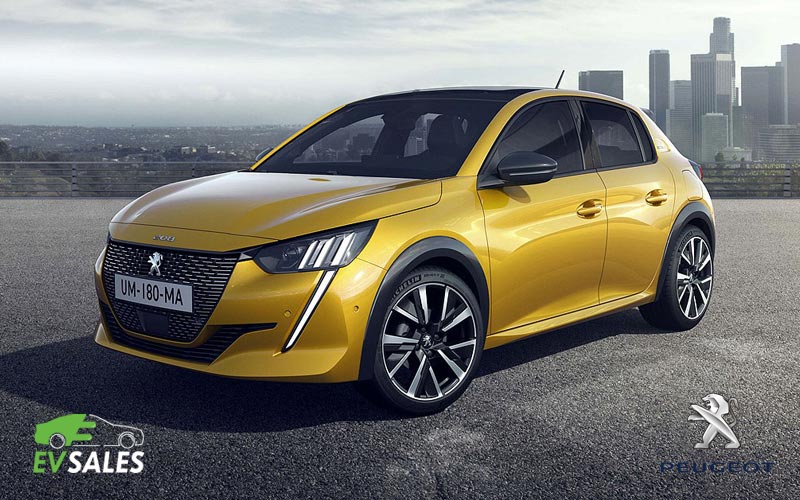
The e-208 has a 50kWh, big battery installed beneath the floor; thus, the interior passenger space and boot room (larger than the fiestas but smaller than the new Clio’s at 311 liters) is the same as the petrol and diesel 208s.
A front-mounted 100kW electric motor provides the drive.
Coming to the point…
The range has been homologated at 217 miles using the latest WLTP test cycle, so regeneration – which we’ll get to later – is critical.
A single-phase AC wall box takes 7.5 hours to charge, but the e-208 can handle 100kW DC rapid charging, which can load six miles into the pack every minute and have you back on the road in 30 minutes.
Performance
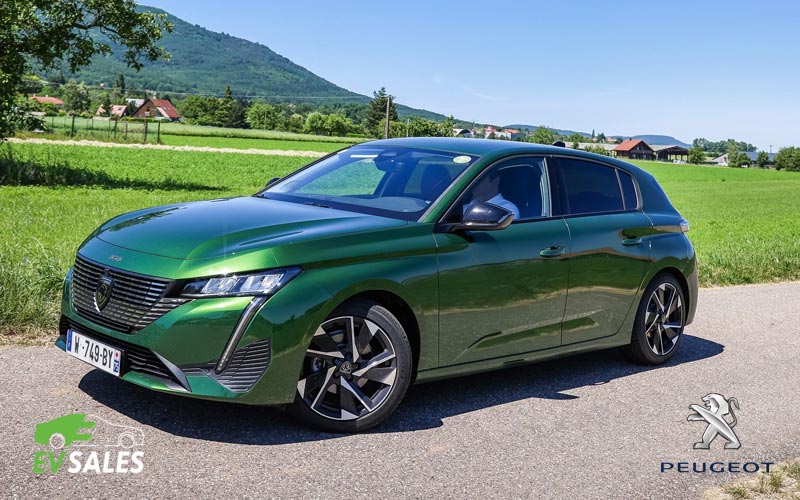
According to the manufacturer, the e-208’s powertrain includes a 136hp electric motor with enough punch to offer it snappy city performance and a 50kWh battery with enough juice to go for up to 217 miles between charges.
We got 161 miles in our range test, which isn’t terrible considering the car’s size.
Using a rapid public charge station, you’ll be able to charge the e-208’s batteries from empty to 80 percent full in just 30 minutes.
Moreover…
Using a 7kW wall charger at home to charge the e-208 takes about 7 hours and costs between £8 and £9, depending on your electricity plan. It will also save you roughly £15 compared to typical petrol or diesel car for the same number of kilometers.
Around turns, traditional-powered compact vehicles like the Ford Fiesta will put a bigger smile on your face, but the e-208 is more enjoyable than other small EVs like the Renault Zoe.
It eagerly steers and changes directions, making it ideal for darting through traffic gaps.
Due to the weight of the batteries, the e-208 is a little heavier than the conventional car; therefore, Peugeot e strengthened the suspension to compensate, which means it doesn’t feel as comfortable over bumps as other 208s.
The Peugeot e-208 is also available with various driver assistance technologies meant to make lengthy journeys less stressful, including a sophisticated cruise control feature that accelerates, brakes, and steers for you.
Moving further…
It’s a lot of fun. It’ll provide 0-60 times compared to a warm hatchback from a decade or two ago. Hit the pedal and drive. There’s no whine coming from the electric motor or reduction gear.
There are three acceleration options to choose from. Only Sport delivers the maximum 136 horsepower.
Each step from Normal to Eco loses 27bhp and 30lb-ft of torque. It allows you to drive more smoothly at low speeds, and Eco mode, particularly, forces you to be more battery-friendly.
You can also choose between two levels of regeneration when the accelerator is turned off, and you may wish to use the higher of those levels.
The brakes are a full-blended system, which is wonderful for range but makes the brake pedal feel sluggish and unresponsive at times.
Full acceleration is possible with very little torque steer or traction loss. It’s a really precise and well-behaved chassis. It isn’t the most engaging compact vehicle in corners, but it isn’t horrible.
The steering is a low-geared center, which helps it maintain a straight line on the highway, and it quickens as you add a lock. The game has a low roll, and the sensitive motor gives it a quick-witted feel.
Insurance

The Peugeot e insurance groups run from 26 for the base model to 28 for the top-of-the-line model, significantly higher than the Renault ZOE’s group 20.
Unfortunately…
Electric cars are now more expensive to insure than comparable petrol or diesel cars; keep this in mind if the vehicle will be operated by a high-risk driver, as premiums may be higher than intended.
The Peugeot comes with a three-year/60,000-mile warranty that can be extended for an additional fee.
The battery is insured for eight years/100,000 miles, and if it loses more than 30% of its as-new performance over that time, it will be replaced or reconditioned.
Is Peugeot E-208 Reliable?
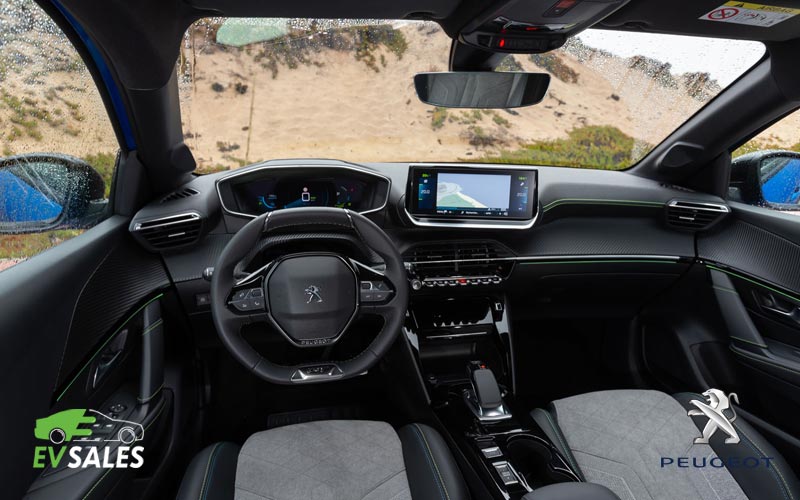
According to the study, Peugeot e came out on top as the most dependable electric car brand available.
In a survey, researchers discovered just seventy faults in every hundred Peugeots.
That may seem like a lot, but the study considered every issue reported. It practically indicates that, on average, Peugeot e owners report less than one complaint per vehicle.
Nonetheless…
It’s a remarkable assertion, especially considering that 23 percent of all Peugeot e vehicles had no defects reported. As a result, over a fifth of all Peugeot Electric cars are effectively perfect.
During the research, it was discovered that the industry average was 119 defects per 100 cars.
That’s more than one defect per vehicle on average, with some manufacturers reporting up to 181 faults per vehicle.
It’s easy to see how Peugeot e came out on top in the survey, with the average number of defects decreasing to almost half that of the rest of the UK – and with fewer than one fault per vehicle.
Cost and Verdict

The Peugeot e-208 is more expensive to buy than some compact electric cars, such as the Fiat 500, but that’s to be expected given how practical it is and how far it can drive between charges.
Indeed, pricing is comparable to those of the similar-sized Renault Zoe and Mini Electric, albeit the e-208 does cost more if you choose one of the higher trim levels.
Turns out…
We wouldn’t advocate it, but we would warn against using Active trim that isn’t well-equipped.
The Active Premium model includes automatic air conditioning, rain-sensing wipers, rear parking sensors, and a leather-wrapped steering wheel.
However, we think Allure is the best of the bunch, thanks to its plusher seats and better external style. The higher trim levels, particularly the GT and GTL, are more luxurious.
In the ancient days, you picked a car and then decided on the engine and transmission. In addition to diesel and gasoline, manual and automatic transmissions, the 208 also has an electric option.
As a result, the e-208 can appeal to consumers who want a 208 first and then choose that engine. And to those who want an electric car first and then choose the e-208.
The 208 is a charming supermini, but it is not without drawbacks.
Moreover…
Not the most spacious vehicle and not the most enjoyable to drive, and the e-208 suffers from the same issues. It does, however, have all of the 208’s many charms.
The electric Mini and Honda e are fun to drive and attractive but limited in range. The Renault Zoe takes things a step further.
Conclusion – Peugeot E-208 Review:
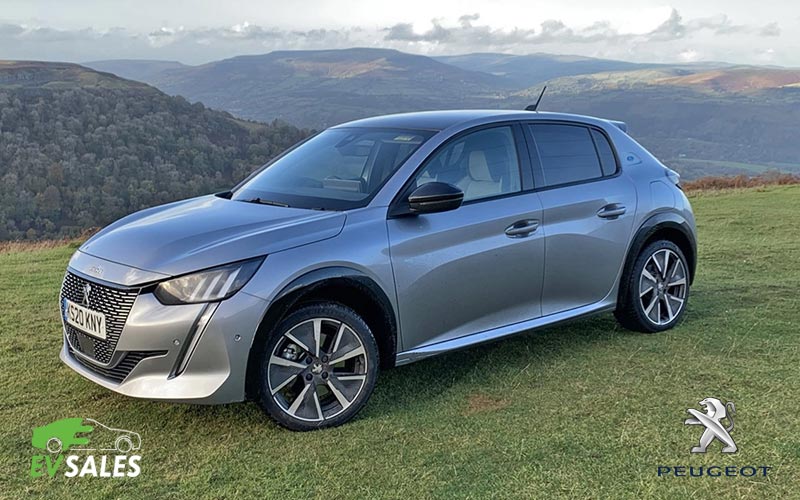
The Peugeot e-208 could be a good place to start if you want to move to a compact electric vehicle. It has a good range, stylish aesthetics and is more practical daily than the Honda e or Mini Electric.
In reality, it shares many similarities with the Vauxhall Corsa-e, as both brands are owned by the same business and are essentially the same underpinnings.
Some of the early automobiles were electric vehicles, but comparing them to modern electric vehicles such as the Peugeot e-208 is like comparing the latest iPhone to morse code.
Precisely…
The e-208 comes included with quick charging and can be managed via an app. It’s fantastic that it received the carwow Car of the Year Award for Best Small Electric Car in 2021.
The e-208 has a striking style thanks to its sculpted bonnet, three-claw LED light patterns, and prominent rear piano black trim.
The ‘e’ badging and distinctive Peugeot e emblem that changes color in different lights set it apart from the normal 208.
It looks the part, has a nice interior, and drives well. Some competitors are less expensive or have longer battery life, but the e-208 is still a good all-arounder.
That’s all you need to know about this small electric car. Hopefully, we covered every aspect of this car, and now you have enough knowledge to go out in the world and compare it to your favorite one.
Thanks for reading, The End!



